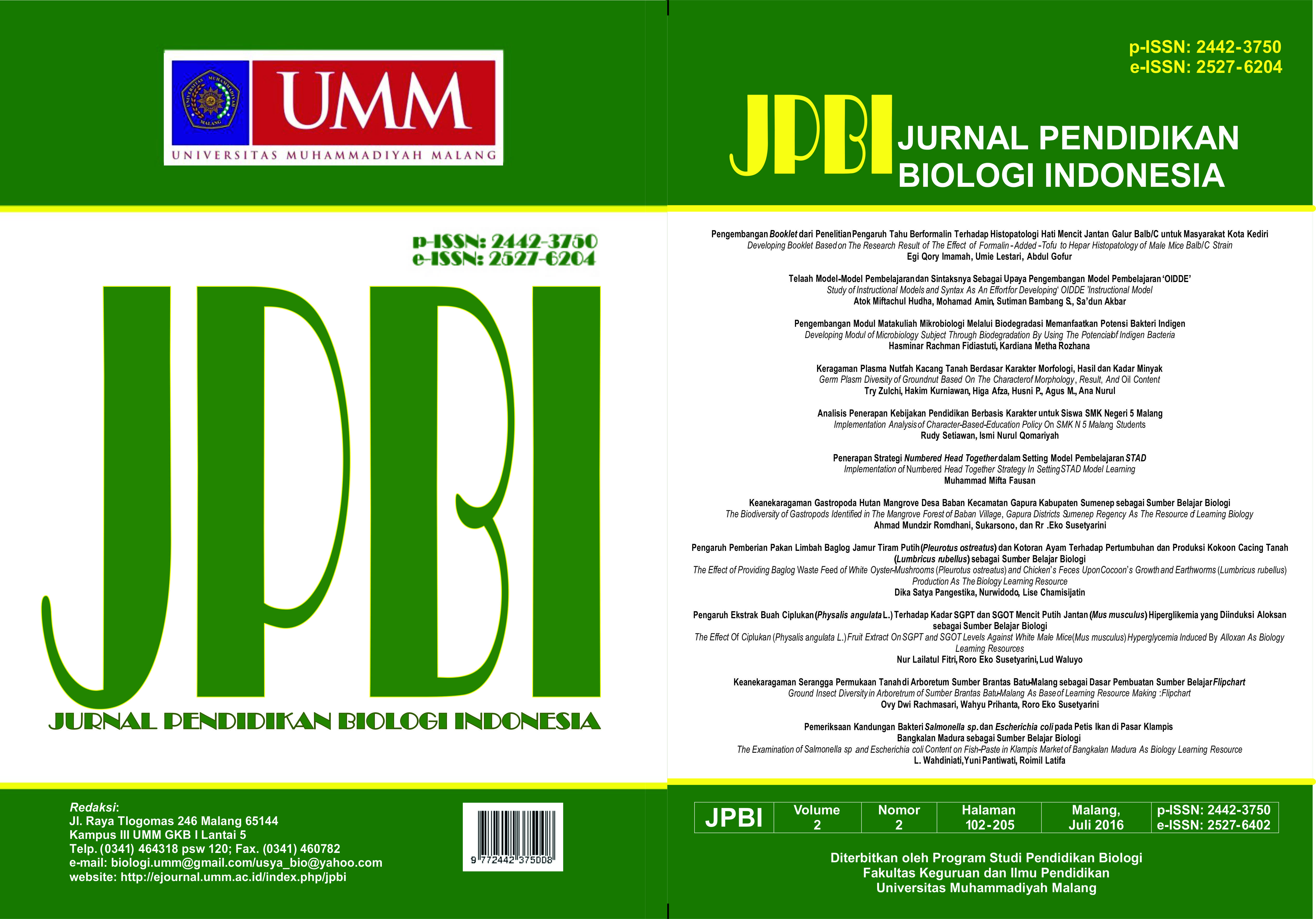GERM PLASM DIVERSITY OF GROUNDNUT BASED ON THE CHARACTER OF MORPHOLOGY, RESULT, AND OIL CONTENT
DOI:
https://doi.org/10.22219/jpbi.v2i2.3466Abstract
Groundnut is one of the largest vegetable oil and has a good nutritional value. It could be used as an alternative source of food, industrial raw materials, and bioenergy. The main function of fats and oil in seeds reserves source of energy. This research aims to study the diversity of morphological, yield, and the oil content in groundnut germplasm. The planting of groundnut was conducted at the experimental station Cikeumeuh BB Biogen Bogor from July until December in 2013, with the germplasm of groundnut as much as 200 accessions. The characters identification is determined by the method of morphological characterization with Groundnut Descriptor from IPGRI. Analyze oil content of groundnut used soxhlets method at the Laboratory of Post-harvest Bogor. The results showed that germplasm groundnut have varied levels of diversity at characters. Relatively high morphological diversity founded the character of pod yield/plot, weight of pods/plant and number of immature pods. Groundnut oil content is range 33% to 47%. There are a real positive correlation between the number of pods to variable morphology, yield and oil content, but negatively correlation at weight of 100 seeds. Number of pods and number of branches is positively correlation with oil content of groundnut seeds. Cultivars groundnut that have the characters of promise could be used as national asset and the source of genes as a parent in the breeding program.
Keywords: Diversity, Groundnut, Morphology, Oil Content
Downloads
Downloads
Published
Issue
Section
License
Authors who publish with JPBI (Jurnal Pendidikan Biologi Indonesia) agree to the following terms:
- For all articles published in JPBI, copyright is retained by the authors. Authors give permission to the publisher to announce the work with conditions. When the manuscript is accepted for publication, the authors agree to automatic transfer of the publishing right to the publisher.
- Authors retain copyright and grant the journal right of first publication with the work simultaneously licensed under a Creative Commons Attribution-ShareAlike 4.0 International License that allows others to share the work with an acknowledgment of the work's authorship and initial publication in this journal.
- Authors are able to enter into separate, additional contractual arrangements for the non-exclusive distribution of the journal's published version of the work (e.g., post it to an institutional repository or publish it in a book), with an acknowledgment of its initial publication in this journal.
- Authors are permitted and encouraged to post their work online (e.g., in institutional repositories or on their website) prior to and during the submission process, as it can lead to productive exchanges, as well as earlier and greater citation of published work (See The Effect of Open Access).

This work is licensed under a Creative Commons Attribution-ShareAlike 4.0 International License.


















